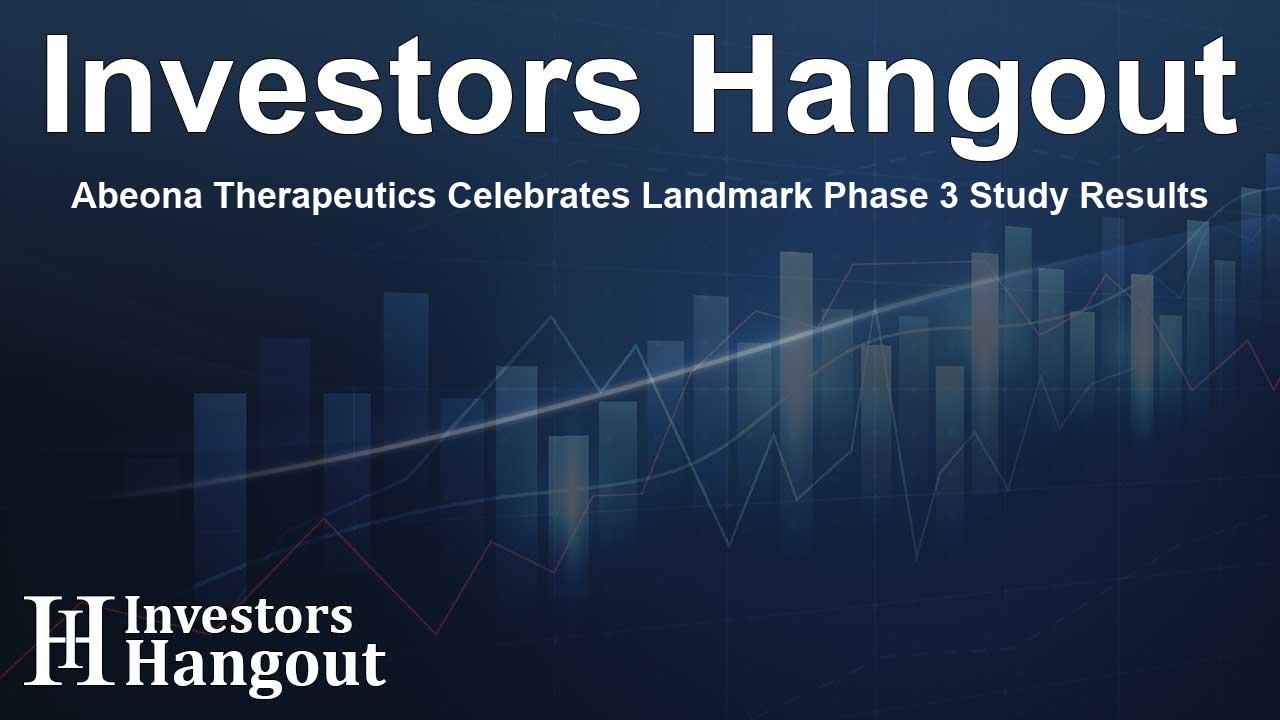Abeona Therapeutics Celebrates Landmark Phase 3 Study Results

Abeona Therapeutics Celebrates Landmark Phase 3 Study Results
- Recessive Dystrophic Epidermolysis Bullosa (RDEB) is a lifelong debilitating skin condition, causing severe pain and wounds that can take years to heal.
- ZEVASKYN™ (prademagene zamikeracel) has shown significant wound healing and reduction in pain with a favorable safety profile after just one treatment for chronic RDEB wounds.
- This treatment is groundbreaking as it is the first autologous cell-based gene therapy to receive FDA approval for treating RDEB wounds in both adult and pediatric patients.
Importance of New Findings
Abeona Therapeutics Inc. (Nasdaq: ABEO) recently announced a significant advancement in the treatment of RDEB. Their Phase 3 VIITAL study results are now published in the prestigious medical journal, The Lancet. The study evaluates the efficacy and safety of ZEVASKYN, a novel gene-modified cellular sheet designed to heal wounds caused by this devastating condition.
RDEB is marked by extreme skin fragility, leading to chronic, painful wounds. In serious cases, these wounds can take years to heal and may develop into life-threatening conditions. With ZEVASKYN, patients can finally have a treatment that not only promotes healing but significantly reduces pain—the dual focuses of this groundbreaking research.
About the Study
The VIITAL study involved 11 participants with RDEB and focused on 43 pairs of their major wounds, each measuring a minimum of 20 cm². These chronic wounds were treated with ZEVASKYN, a single application offering hope to patients who face a lifetime burden from their condition. At the six-month mark, researchers evaluated the treatment's effectiveness based on two primary endpoints.
Positive Outcomes
The results were promising—81% of treated wounds showed healing of 50% or more, compared to only 16% of untreated control wounds. Such substantial improvement illustrates the power of ZEVASKYN. Moreover, patient pain levels decreased significantly after treatment, reflecting the dual benefit of both healing and pain reduction.
Real Impact on Patients' Lives
Jean Tang, M.D., Ph.D., the lead investigator of the study, emphasized the importance of these findings. "The pain and suffering faced by individuals with RDEB are immense. Our study demonstrates that ZEVASKYN not only improves healing but also alleviates pain associated with persistent wounds, significantly enhancing patients' quality of life," she stated.
This breakthrough is especially important considering that there was no prior approved treatment for RDEB wounds. ZEVASKYN has changed the trajectory of care for these patients, bringing much-needed hope to families affected by this debilitating condition.
About RDEB and ZEVASKYN
RDEB stems from genetic mutations leading to a lack of functioning type VII collagen, essential for skin stability. The inability to produce this protein causes the skin to be extremely fragile and prone to blistering. ZEVASKYN employs gene therapy utilizing the patient’s own skin cells, integrating the COL7A1 gene to restore collagen production in wounds.
Looking Ahead
Abeona's CEO, Vish Seshadri, expressed confidence in the launch of ZEVASKYN, with treatment expected to begin in the near future. "The publication in The Lancet is a pivotal achievement. We extend our gratitude to the patients and families who participated in the study, aiding in the advancement of care for RDEB," he said.
The study also reinforces Abeona’s commitment to innovating treatments for rare and serious diseases. The company operates a state-of-the-art facility dedicated to manufacturing ZEVASKYN, ensuring patients have access to this critical treatment.
Frequently Asked Questions
What is RDEB?
Recessive Dystrophic Epidermolysis Bullosa (RDEB) is a severe genetic skin disorder characterized by fragile skin and chronic wounds.
What is ZEVASKYN?
ZEVASKYN is an autologous cell-based gene therapy approved for treating wounds associated with RDEB.
Who can benefit from ZEVASKYN?
Both adult and pediatric patients suffering from RDEB can potentially benefit from ZEVASKYN.
What were the results of the VIITAL study?
The VIITAL study showed significant wound healing and pain reduction in patients treated with ZEVASKYN.
How does ZEVASKYN work?
ZEVASKYN integrates the COL7A1 gene into the patient’s own skin cells to produce functional type VII collagen, necessary for skin integrity.
About The Author
Contact Evelyn Baker privately here. Or send an email with ATTN: Evelyn Baker as the subject to contact@investorshangout.com.
About Investors Hangout
Investors Hangout is a leading online stock forum for financial discussion and learning, offering a wide range of free tools and resources. It draws in traders of all levels, who exchange market knowledge, investigate trading tactics, and keep an eye on industry developments in real time. Featuring financial articles, stock message boards, quotes, charts, company profiles, and live news updates. Through cooperative learning and a wealth of informational resources, it helps users from novices creating their first portfolios to experts honing their techniques. Join Investors Hangout today: https://investorshangout.com/
The content of this article is based on factual, publicly available information and does not represent legal, financial, or investment advice. Investors Hangout does not offer financial advice, and the author is not a licensed financial advisor. Consult a qualified advisor before making any financial or investment decisions based on this article. This article should not be considered advice to purchase, sell, or hold any securities or other investments. If any of the material provided here is inaccurate, please contact us for corrections.
